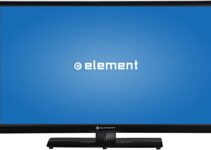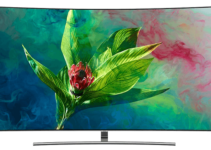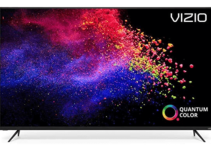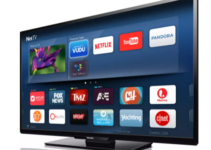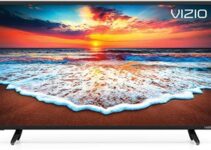As a proud owner of the Samsung KS8500 TV, you’re probably well aware of its amazing features and stunning picture quality. But let’s face it – even the best TV can be improved with the right settings.
Whether you’re an avid gamer, a movie buff or just someone who loves a good binge-watch session, getting the perfect picture settings can make all the difference.
With so many options available, navigating through the menus and figuring out which settings to adjust can be overwhelming.
But don’t worry, we’ve got you covered!
In this blog post, we’ll review the different picture settings available on the Samsung TV and help you find the optimal configuration for your viewing preferences.
That said, let’s dive in.
Best Picture Settings for Samsung KS8500
Here’s a quick overview of recommended picture settings:
| Setting | Recommended Value |
| Picture Mode | Movie |
| Backlight | 3 |
| Color | 50 |
| Tint (G/R) | G50/R50 |
| Contrast | 96 |
| Dynamic Contrast | Off |
| Auto Motion Plus | Off |
| Gamma | 0 |
| Smart LED | High |
| RGB Only Mode | Off |
| Brightness | 45 |
| Sharpness | 0 |
| Digital Clean View | Off |
| Color Space | Custom |
| Color Tone | Warm2 |
Below, we’ll explore these settings in detail.
General Picture Settings
Here are the best general picture settings for Samsung KS8500.
Picture mode
Picture Mode is one of the most important settings to consider when setting up your Samsung KS8500.
This setting allows you to adjust your TV’s overall brightness, contrast, and color balance, giving you a better viewing experience.
The default Picture Mode is usually standard, but other modes are available, like Dynamic, Movie, and Game Mode.
Each mode is designed to optimize the picture quality for a specific viewing scenario, so it’s worth experimenting with different modes to find the one that suits your needs.
For example, Movie Mode is best for watching movies in a dark room, while Game Mode is designed for fast-paced gaming with minimal lag.
Special viewing mode
In addition to the Picture Mode, Samsung KS8500 also offers Special Viewing Modes, designed to enhance the picture quality for specific types of content.
For example, the Sports Mode is designed to enhance the color and contrast of sports broadcasts, while the HDR+ Mode can provide a more vivid and lifelike image.
These special modes are worth exploring if you want to optimize the picture quality for a particular type of content.
Picture size (aspect ratio)
Another important picture setting to consider is the Picture Size or Aspect Ratio.
This setting allows you to adjust the size and shape of the image on your TV so it fits your screen and viewing preferences.
The default Aspect Ratio is usually set to 16:9, the standard widescreen format. But other aspect ratios are available, too, including 4:3, 1:1, and Zoom.
Depending on your watching content, you may want to adjust the Aspect Ratio to avoid black bars or distortion.
For example, if you’re watching an old movie in 4:3 format, adjust the Aspect Ratio to avoid stretching or cutting off the image.
Expert Picture Settings
If you’re looking to take your Samsung KS8500 picture quality to the next level, delve into the Expert Picture Settings.
These settings allow you to fine-tune various aspects of your TV’s picture quality, including Backlight, Brightness, Contrast, Sharpness, and Color.
Here’s a breakdown of what each setting does and some recommended values.
Backlight
The Backlight setting controls the brightness of the TV’s backlight, which affects the overall brightness of the image.
The recommended value for Backlight will vary depending on your viewing environment and personal preference, but a good starting point is around 50-60.
Brightness
The Brightness setting defines the overall darkness or brightness of the image.
You’ll want to adjust this setting so that black levels are deep and inky without losing detail in the shadows.
A recommended value for Brightness is around 45-50.
Contrast
The Contrast setting determines the difference between the brightest and darkest areas of the image.
Too much contrast can result in a washed-out image, while too little can make the picture look dull.
A recommended value for Contrast is around 85-90.
Sharpness
The Sharpness setting controls the overall sharpness of the image.
You’ll want to be careful not to overdo it, as too much sharpness can result in unnatural-looking edges and artifacts.
A recommended value for Sharpness is around 0-5.
Color
The Color setting sets the overall color saturation of the image.
You should adjust this setting so that colors look rich and vibrant without being oversaturated.
A recommended value for Color is around 50-55.
Tint
The Tint setting determines the overall color balance of the image.
Adjust this setting, so that skin tones and other colors look natural and accurate.
A recommended value for Tint is usually around 50.
Digital clean view
The Digital Clean View setting is designed to reduce noise and interference in the image.
It’s especially useful for lower-quality sources like standard-definition TV broadcasts or streaming content.
You can adjust this setting based on your personal preference.
Auto motion plus
The Auto Motion Plus setting reduces motion blur and provides a smoother image, especially for fast-moving content like sports or action movies.
But this setting can sometimes result in the so-called “soap opera effect,” where the image looks too smooth and unrealistic.
If you’re sensitive to this effect, you may want to turn this setting off.
Otherwise, a recommended value for Auto Motion Plus is usually around Custom, with a judder reduction of 4-5 and a blur reduction of 8-10.
Smart LED
The Smart LED setting controls the local dimming of the TV’s backlight, resulting in deeper blacks and better contrast.
You can turn on the Smart LED setting for these benefits.
You can also experiment with different settings based on your personal preference.
Dynamic contrast
The Dynamic Contrast setting adjusts the contrast of the image dynamically based on the content being displayed.
But this setting can sometimes result in an overly artificial-looking image.
It’s preferable to keep Dynamic Contrast Off, but you can also enable it as needed.
Color Tone
The Color Tone setting defines the overall color temperature of the image.
You can choose between Cool, Normal, and Warm presets, with each setting providing a different balance of blue and red tones.
We recommended the Normal option for Color Tone, but you can also try other options.
If you’re watching the TV in a dimly lit room, you may want to choose a warmer setting to reduce eye strain.
But if you prefer a cooler, bluish look to your image, choose the Cool setting instead.
White Balance Settings
The White Balance Settings allow you to fine-tune the color temperature of the image.
It’s an advanced setting that requires some technical knowledge and a calibration tool, but it can greatly improve the accuracy and consistency of your TV’s color reproduction.
Here’s a breakdown of what each setting does and some recommended values:
Color space
The Color Space setting defines the color gamut of the image. In other words, it determines which colors can be displayed.
You’ll want to choose the color space that matches your source material, as some content is designed to be viewed in a specific color space.
For example, most movies and TV shows are mastered in the Rec.709 color space, while some newer content is mastered in the wider DCI-P3 color space.
A recommended value for Color Space is usually Auto – it will automatically switch to the correct color space based on the content being displayed.
Gamma
The Gamma setting determines the overall brightness and contrast of the image.
You’ll want to adjust this setting so that the image looks natural and balanced without losing detail in the shadows or highlights.
A recommended value for Gamma is usually around 2.2, which is the standard gamma for most content.
Color Temperature
The Color Temperature setting defines the overall warmth or coolness of the image.
Adjust this setting so that whites look neutral and free of color casts.
A recommended value for Color Temperature is usually around Warm2. It provides a slightly warmer look than the standard Neutral setting.
R-Gain, G-Gain, and B-Gain
The R-Gain, G-Gain, and B-Gain settings control the individual color channels of the image, allowing you to fine-tune the color balance.
You can use a calibration tool to adjust these settings, as they require precise measurements and adjustments.
A good value for R-Gain, G-Gain, and B-Gain is usually around -1 to +1, depending on your viewing environment.
Final Words
In conclusion, finding the best picture settings for your Samsung KS8500 TV can greatly enhance your viewing experience.
By following the recommendations provided in this post, you can optimize the picture quality of your TV and enjoy your favorite movies, TV shows, and games in a whole new way!
